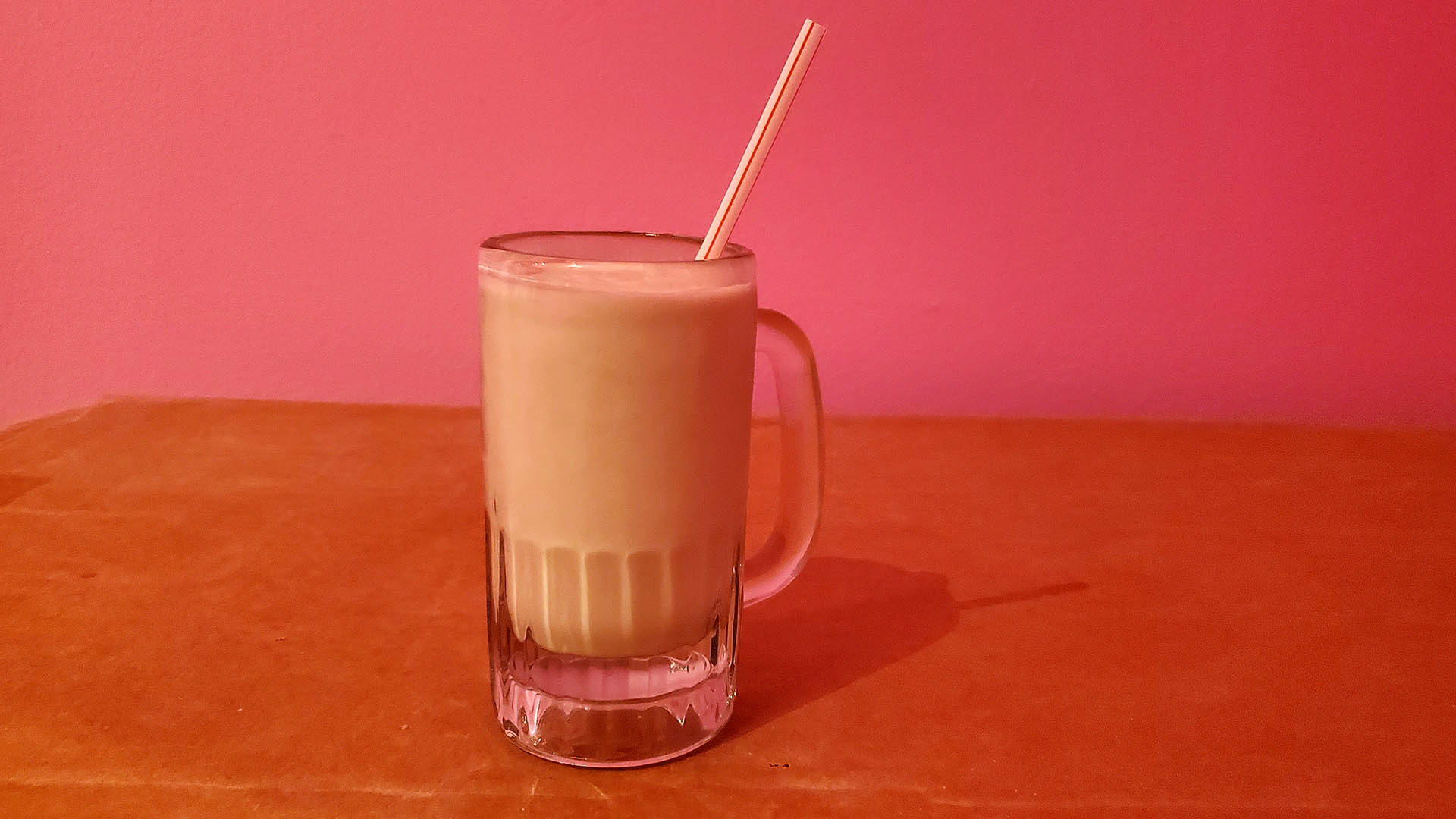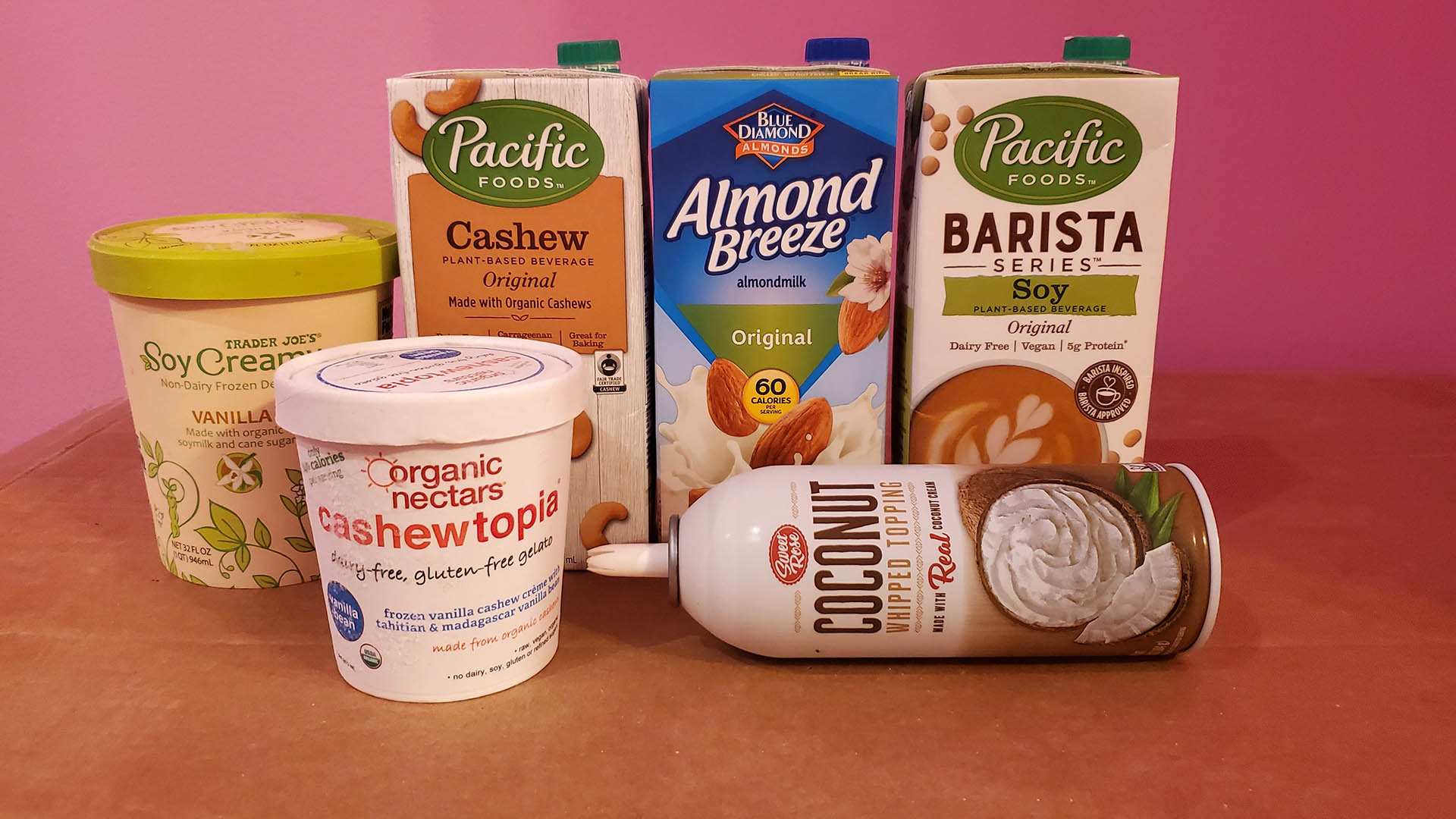Yes, It's Possible To Make A Great Vegan Milkshake. Here's How.
The homemade vegan milkshake has long been my white whale. While making traditional dairy-based milkshakes is pretty straightforward, every time I've tried to make a vegan milkshake, it's been a total disaster.
The taste is always kind of... off. There are a ton of non-dairy alternatives to milk and ice cream out there but some, such as coconut milk, wind up bringing additional flavors to the beverage. When I want a plain chocolate or vanilla milkshake, I don't necessarily want something with a piña colada vibe. And I've repeatedly wound up with a giant icy chunk of the non-dairy ice cream floating in the middle of my glass with a thin liquid around the edge.
Despite my repeated screw-ups, I remained determined to make a good vegan milkshake at home. So, I sought the advice of three experts—culinary professionals who make a lot of vegan milkshakes—for their tips and tricks. Turns out, it's not impossible, even if you're using a $40 Hamilton Beach milkshake mixer like I am.
The Base
Cody Lentini, head chef of Champs Diner in Brooklyn, recommends soy and cashew products as a great blank canvas. Soy ice cream is very neutral, flavor-wise. And cashew, he says, "gives you that rich, creamy, and silky texture that you get from a high-fat content ice cream."
Humberto Olivera, general manager of Saturn Cafe, a vegan and vegetarian comfort food favorite in Santa Cruz, California, also touted soy ice cream as an excellent base. "It's really good texturally," he says. "It's really creamy."
The Milk
Olivera suggested almond milk. Lentini said that he loves cashew milk, but soy might be the best option at home, given that nut-based milks have varying thicknesses.
Of course, you can take a more involved approach with the milks.
Chef Jenn Ross, whose DaJen Eats Cafe & Creamery in Eatonville, Florida, serves up vegan food with a Jamaican flair, explains store-bought nut milks can be thin. She recommends several DIY approaches to plant-based milk help make this drinkable dessert creamier. Frozen coconut water, for example, makes the cream rise to the top and can be used instead of a milk-alternative in homemade shakes. And covering a cup of cashews with an inch of water and then mixing it in a blender "gives you [a milk] the consistency of heavy cream," she says.
The Mix
For a perfect thick milkshake, Olivera combines 10 ounces of ice cream with 4 ounces of milk. Lentini uses slightly different proportions: "If I were to give a number based off of eyeballing it, I'd say two cups of ice cream (16 ounces) to a quarter cup (two ounces) of milk," he says. "That would give you a real nice, thick shake."
Ross, who makes a custard-like vegan ice cream at her restaurant, likes thick milkshakes, "the kind of stuff that doesn't fall off your spoon.... We put a lot of scoops of ice cream in it, just a splash of milk." The ice cream-to-milk ratio comes out to about six-to-one.
The Blend
Olivera suggests mixing shakes for less than a minute—maybe 45 seconds—at high speed. If you mix any longer, he warns, you're going to wind up with a liquidy shake.
Lentini says to start blending on the low setting to let the base and milk incorporate with each other, and then speed it up. The only way to figure out what works best—and avoid the dreaded soupiness—is by doing. And never use a frozen block of solid ice cream. "If you're at home, you can just leave it on the counter for a couple of minutes," he says. "You just want it to warm up a little bit to get softer... if you squeeze the pint, there should be a little give to it."
The Extras
For a chocolate milkshake, Olivera recommends adding two ounces of chocolate syrup to the mix. He cautions that the total amount of liquid shouldn't change, so if you're using 10 ounces of ice cream and two ounces of syrup, you can reduce the amount of milk to two ounces. Ross sometimes mixes syrups, caramel, chocolate, and other accents like chunks of red velvet cake to her thicker shakes.
As for whipped cream, both Olivera and Lentini use coconut milk-based varieties: Saturn Cafe's is homemade, while Champs uses Cocowhip by So Delicious, which is available at many stores.
The Test
Since I wanted a thick-yet-sippable shake and am too impatient to make my own dairy-free milk, I went with store-bought milks and ice creams. I tried several combinations based on the experts' recommendations: soy ice cream and almond milk, soy ice cream and soy milk, cashew ice cream and cashew milk. I left the ice cream containers on the counter for a few minutes so the contents wouldn't be glacial. I decided to use sweetened plant milks, given that dairy milk has lactose, which is a form of sugar.
The soy and almond milk mix, as it turned out, was pretty on point texture-wise: thick but sippable. While I could definitely tell it was soy ice cream, I was surprised that the almond barely came through in terms of flavor.
I tried both Lentini and Olivera's proportions with soy ice cream and soy milk. The former was a bit difficult to sip. It tasted like soy ice cream, but it did not scream vegan milkshake made of soy! Olivera's proportions made for a thinner shake, and because there was more unflavored soy milk, the vanilla taste wasn't as prominent.
Next I tried the cashew milk and ice cream combo. Using these ingredients and Lentini's proportions (16 oz. ice cream to 2 oz. milk), it was the most milkshake-like in terms of texture and taste—extremely creamy, thick but not excessively so. It was rich, which I loved. I also tried Olivera's ratio (10 oz./4 oz.) with the cashew base and milk. The flavor was on point, though it was, understandably, a bit thinner.
Ultimately, each of these approaches had its pros and cons, but all worked really well. It wouldn't be fair to say one was the best. Some people might prefer their shakes to taste like soy milk, while others might like the more neutral creaminess of cashew products, and desired thickness is similarly quite subjective. The great news: I didn't wind up with a chunk of ice cream with a bunch of liquid at the sides with any of these combos. Sometimes there were some bits of ice cream that weren't fully incorporated in the shakes, but I easily fixed them by gently prodding these lumps with a spoon. As I continue to tinker with—and consume—vegan milkshakes, I'll probably play around with different brands of plant milks, too. It's possible that vanilla-flavored plant milks will enrich the flavor dramatically.
One thing is for certain, though: When I drizzled chocolate syrup onto a shake and then covered it with a hearty dollop of vegan whipped cream, it was heavenly every single time.

